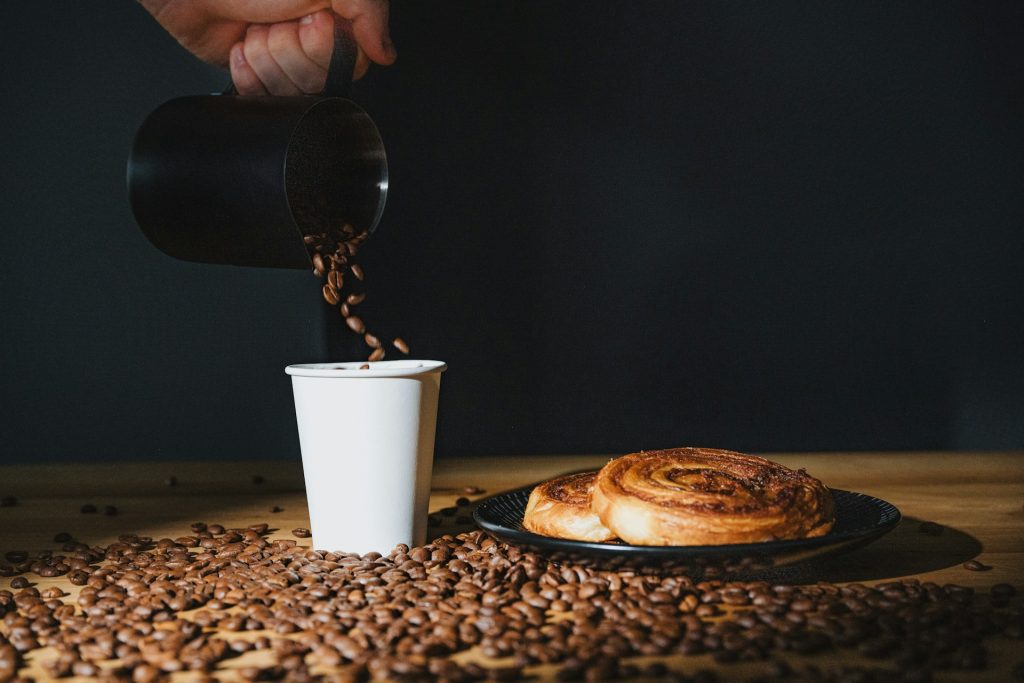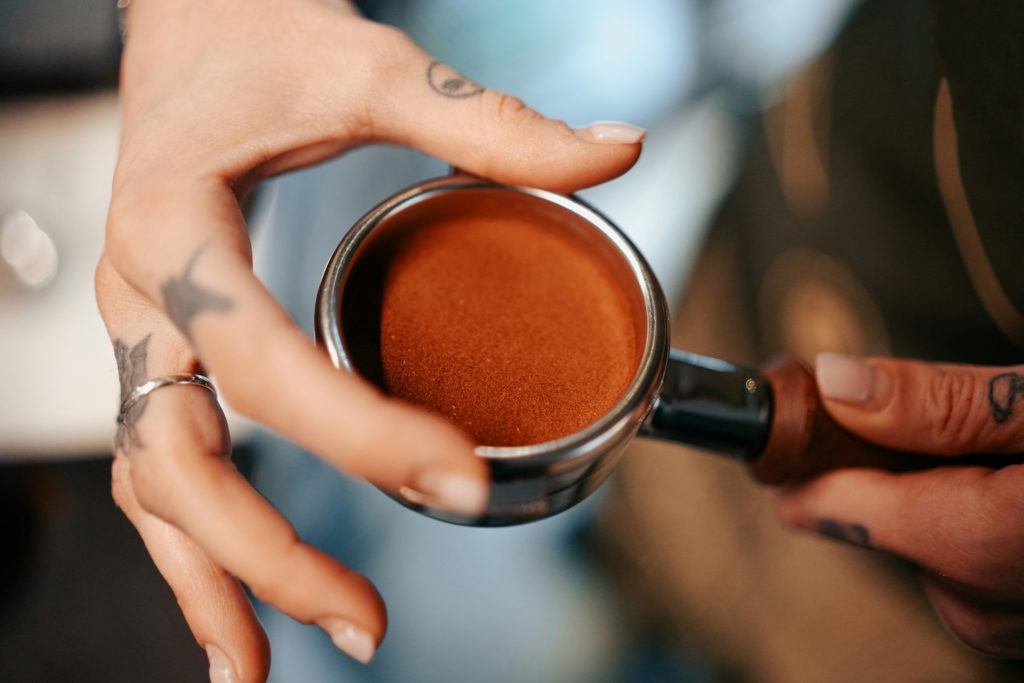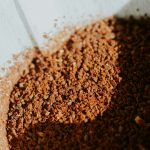Table of Contents
Picture this: You’ve just brought home a bag of premium, freshly roasted coffee beans. The aroma is intoxicating, promising mornings filled with rich, flavorful brews.
But fast forward a few weeks, and your once-vibrant beans are producing lackluster cups that make you wonder if you’re brewing coffee or warm dishwater.
Sound familiar? Fear not, fellow coffee enthusiasts! Today, we’re diving into the art and science of storing coffee beans to keep them fresh and flavorful for as long as possible.
The Enemy of Freshness: Understanding Coffee Bean Degradation

Before we jump into storage solutions, let’s talk about what we’re up against. Coffee beans, like any organic product, degrade over time.
The main culprits behind this flavor theft are oxygen, moisture, heat, and light. Each of these factors can wreak havoc on your beans in different ways.
Oxygen is perhaps the biggest villain in our coffee freshness story. When coffee beans are exposed to air, they undergo a process called oxidation.
This doesn’t just make your beans go stale – it actively changes their chemical composition, affecting flavor and aroma. Ever noticed how coffee can develop a slightly rancid taste over time? That’s oxidation at work.
Moisture is another major threat. Coffee beans are hygroscopic, meaning they readily absorb water from their environment. This can lead to mold growth and can also accelerate the breakdown of flavor compounds.
Even in small amounts, moisture can cause your beans to deteriorate faster than you can say “espresso.”
Heat and light are partners in crime when it comes to coffee degradation. Both can cause the oils in coffee beans to break down, leading to a loss of flavor and aroma. Light, especially direct sunlight, can also trigger chemical reactions that alter the taste of your coffee.
The Golden Rules of Coffee Storage

Now that we know our enemies, let’s talk about strategy. The key to keeping your coffee beans fresh lies in creating an environment that protects against oxygen, moisture, heat, and light. Here are the golden rules of coffee storage:
Keep it airtight: Your storage container should form a tight seal to keep oxygen out. This is non-negotiable if you want to maintain freshness.
Stay cool and dry: Find a spot in your kitchen that maintains a consistent, cool temperature and low humidity. Avoid storing your beans near the stove, oven, or any other heat source.
Embrace the dark side: Light is not your friend when it comes to coffee storage. Opt for an opaque container or keep your beans in a dark cupboard.
Buy the right amount: The best way to ensure freshness is to buy only what you can use within a few weeks. Coffee is at its peak flavor within 2-4 weeks after roasting.
Choosing the Right Container: Your Coffee’s New Home

Your choice of storage container can make or break your coffee freshness game. The ideal container should be airtight, opaque, and non-reactive. Let’s break down some popular options:
Ceramic canisters with airtight seals are a classic choice. They keep out light and air while adding a touch of style to your kitchen counter. Just make sure the seal is truly airtight – not all ceramic canisters are created equal.
Glass jars with rubber seals can work well, but only if you keep them in a dark place. While they allow you to see how much coffee you have left, they don’t offer protection from light.
Stainless steel containers are another excellent option. They’re durable, won’t react with your coffee, and naturally block out light. Look for ones with a CO2 valve for the freshest results.
Specially designed coffee vaults are the Cadillac of coffee storage. These often come with a one-way CO2 valve that allows the beans to release gas without letting oxygen in. They’re an investment, but can significantly extend the life of your beans.
Whatever you choose, steer clear of the original packaging once it’s been opened. Those bags are designed for shipping and short-term storage, not for maintaining long-term freshness.
The Great Debate: To Freeze or Not to Freeze?

Ah, the age-old question that divides coffee lovers worldwide: should you freeze your coffee beans? The answer, like many things in the world of coffee, is… it depends.
Freezing can indeed extend the life of your coffee beans, especially if you’ve bought in bulk or don’t drink coffee very often. The key is to do it right. If you decide to freeze your beans, here’s how to do it without compromising flavor:
Use an airtight, freezer-safe container. Freezer burn is real, and it’s not kind to coffee flavors.
Divide your beans into smaller portions before freezing. This way, you can thaw only what you need without exposing the rest to temperature fluctuations.
Once you’ve removed beans from the freezer, don’t put them back. The freeze-thaw cycle can introduce moisture and affect flavor.
Allow frozen beans to come to room temperature before grinding and brewing. This prevents condensation from forming on the cold beans.
However, for most coffee drinkers, freezing isn’t necessary. If you’re going through a bag of coffee within 3-4 weeks, you’re better off storing it at room temperature using the methods we’ve discussed.
The Grind: A Fresh Perspective

Here’s a pro tip that can revolutionize your coffee game: buy whole beans and grind them just before brewing. Once coffee is ground, its surface area increases dramatically, accelerating all those pesky degradation processes we talked about earlier.
By keeping your beans whole until the last possible moment, you’re preserving their flavors and aromas. Yes, it takes an extra minute or two in the morning, but the difference in taste is well worth it.
If you must buy pre-ground coffee (we get it, sometimes convenience wins), store it the same way you would whole beans, but know that its peak freshness window is much shorter.
Signs Your Coffee Has Gone Stale

Even with the best storage methods, coffee doesn’t last forever. Here are some signs that it might be time to restock:
Loss of aroma: Fresh coffee has a strong, pleasant smell. If your beans don’t greet your nose when you open the container, they’re past their prime.
Dull appearance: Fresh beans have a slight sheen due to their oils. If they look dull or dry, the freshness has faded.
Weak flavor: If your brewed coffee tastes flat or lacks complexity, your beans might be stale.
No crema: For espresso drinkers, a lack of crema (that golden foam on top) can indicate that your beans are too old.
Wrapping Up: Your Coffee, Your Way
Storing coffee beans properly is an art and a science, but it doesn’t have to be complicated. By protecting your beans from their main enemies – air, moisture, heat, and light – you’re well on your way to ensuring every cup is as delicious as possible.
So go forth, armed with this knowledge, and elevate your home coffee game. Your taste buds (and your wallet) will thank you for skipping the coffee shop and brewing your own expertly stored, perfectly fresh coffee at home. Here’s to many mornings of aromatic, flavorful brews ahead!

I’m Audrey, a dedicated mother of teenagers with an insatiable love for coffee. On BeanBrewLove.com, I intertwine my need for caffeine with reflections on life. Whether expressing a nostalgic sentiment or injecting a hint of sarcasm, my blog is a reservoir of coffee culture, brewing techniques, and global coffee reviews.




